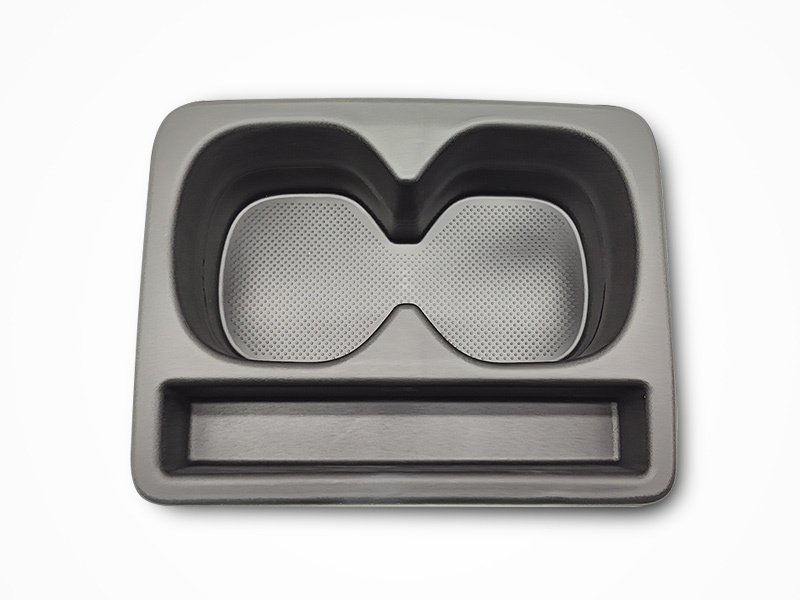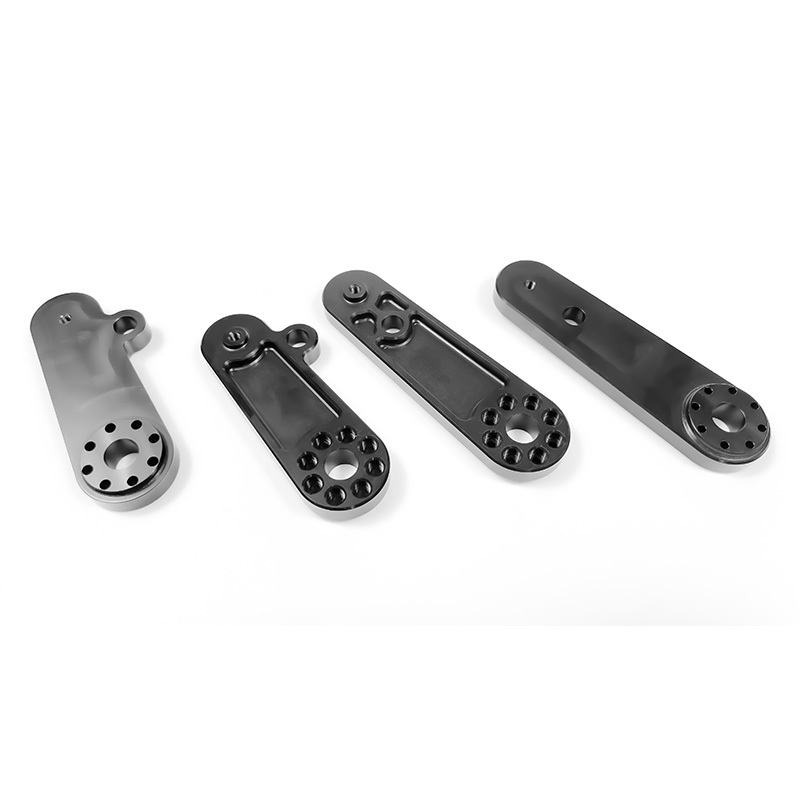The Science Behind Cheap Plastic Moulding: How It Works
Time:
2025-06-04 09:20
Source:
The Science Behind Cheap Plastic Moulding: How It Works
Introduction to Plastic Moulding
Plastic moulding is a crucial manufacturing process that involves shaping molten plastic into desired forms. This method is widely used across various industries, from automotive to consumer goods. In recent years, the demand for cheap plastic moulding has soared, driven by the need for cost-effective production solutions. Understanding the intricacies of this process can help businesses optimize their operations and enhance product quality.
The Importance of Cost-Effective Plastic Moulding
Cost-effective plastic moulding is essential for businesses looking to maintain competitiveness in today’s fast-paced market. By optimizing the moulding process, manufacturers can significantly reduce production costs without compromising on quality. This section delves into the factors that contribute to the affordability of plastic moulding and its implications for the industry.
Materials Used in Cheap Plastic Moulding
The choice of materials plays a pivotal role in the cost of plastic moulding. Various plastics are available, each with its unique characteristics, advantages, and price points.
Common Types of Plastics in Moulding
1. **Polyethylene (PE)**: Known for its versatility and low cost, polyethylene is one of the most commonly used plastics in moulding. It’s lightweight and resistant to moisture, making it ideal for a wide range of applications.
2. **Polypropylene (PP)**: This plastic is known for its durability and resistance to heat and chemicals. PP is often used in automotive parts, packaging, and household goods.
3. **Polyvinyl Chloride (PVC)**: PVC is more affordable than many alternatives and boasts excellent durability. It’s commonly used in plumbing, electrical wiring, and construction materials.
4. **Acrylonitrile Butadiene Styrene (ABS)**: Although slightly more expensive, ABS is favored for its high impact resistance and ability to be easily painted and machined.
How the Moulding Process Works
The plastic moulding process, while seemingly straightforward, is a complex series of steps that involve precision and technology.
Injection Moulding
Injection moulding is the most popular method for producing plastic parts. The process begins with melting plastic pellets, which are then injected into a mould under high pressure. After cooling, the mould is opened, and the finished part is ejected. This method is highly efficient for mass production and is responsible for the affordability of plastic components in various industries.
Blow Moulding
Blow moulding is primarily used for creating hollow plastic parts, such as bottles. In this process, a plastic tube is heated and inflated with air to form a shape. While blow moulding can be slightly more expensive than injection moulding, it offers unique advantages for specific applications.
Rotational Moulding
Rotational moulding involves rotating a mould while heating it to distribute the plastic evenly. This method is ideal for creating large, hollow parts and is often used for items like kayaks and storage tanks.
Factors Influencing the Cost of Plastic Moulding
Several factors influence the cost of plastic moulding, making it essential for manufacturers to understand these elements to optimize production.
Tooling Costs
The initial investment in moulds can be significant. However, advanced manufacturing techniques and technologies have reduced the cost of tooling over the years. By utilizing CNC machining and 3D printing, manufacturers can create more affordable moulds without sacrificing quality.
Production Volume
Higher production volumes often lead to lower per-unit costs. Manufacturers can spread the tooling and operational costs over a larger number of parts, making mass production more economical.
Material Selection
As previously mentioned, the choice of material directly affects moulding costs. Opting for cost-effective materials without compromising performance is vital for maintaining affordability.
Technological Innovations in Cheap Plastic Moulding
The evolution of technology has significantly impacted the plastic moulding industry, leading to more cost-effective and efficient production methods.
3D Printing and Prototyping
3D printing technology allows manufacturers to create prototypes quickly and at a lower cost than traditional methods. This technology can streamline the design process, reducing the time and resources required for product development.
Computer-Aided Design (CAD)
CAD software enables precise design and simulation of moulds, minimizing errors and reducing production costs. By optimizing designs before manufacturing, companies can avoid costly mistakes and improve efficiency.
Automation in Manufacturing
Automated processes enhance efficiency and reduce labor costs, contributing to overall savings in plastic moulding. Robotic arms for assembly and quality control systems can significantly improve production speed and accuracy.
Sustainability in Plastic Moulding
As environmental concerns become more prominent, the plastic moulding industry is evolving toward more sustainable practices. Understanding these practices can aid manufacturers in making responsible choices.
Recycled Plastics in Moulding
Utilizing recycled materials is a growing trend in plastic moulding. Manufacturers can reduce their carbon footprint and lower production costs by incorporating recycled plastics into their processes.
Sustainable Manufacturing Practices
Implementing energy-efficient machinery and reducing waste during the moulding process can also enhance sustainability. Companies are increasingly adopting practices that minimize their environmental impact while maintaining profitability.
Future Trends in Plastic Moulding
The plastic moulding industry is constantly evolving. Staying ahead of trends is critical for manufacturers looking to maintain a competitive edge.
Smart Manufacturing and IoT Integration
The integration of the Internet of Things (IoT) into manufacturing processes is transforming the plastic moulding industry. Smart machines equipped with sensors can provide real-time data, enabling manufacturers to optimize operations and reduce costs.
Advanced Materials Development
Research into new materials, including biodegradable plastics and composites, is paving the way for innovative applications in moulding. As these materials become more accessible, they could transform the industry landscape.
Frequently Asked Questions (FAQs)
1. What is the difference between injection moulding and blow moulding?
Injection moulding involves injecting molten plastic into a mould to create solid parts, while blow moulding uses air to inflate heated plastic into hollow shapes, such as bottles.
2. How can I reduce costs in plastic moulding?
Cost reduction can be achieved by optimizing production volume, selecting cost-effective materials, and utilizing advanced technologies like 3D printing and automation.
3. Is it possible to use recycled materials in plastic moulding?
Yes, many manufacturers incorporate recycled plastics into their moulding processes, which can help reduce costs and environmental impact.
4. What are the advantages of using 3D printing in moulding?
3D printing allows for rapid prototyping, reducing development time and costs. It also enables more complex designs that may not be feasible with traditional methods.
5. What future trends should manufacturers pay attention to in plastic moulding?
Manufacturers should focus on smart manufacturing technologies, sustainable practices, and advancements in material science to stay competitive in the evolving landscape of plastic moulding.
Conclusion
Understanding the science behind cheap plastic moulding is crucial for manufacturers looking to enhance efficiency, reduce costs, and maintain high-quality standards. By exploring the various materials, processes, and technologies involved, businesses can optimize their operations and adapt to the changing demands of the market. With sustainability and innovation at the forefront of industry trends, the future of plastic moulding promises to be both exciting and transformative. Embracing these changes will not only benefit manufacturers but also contribute to a more sustainable future for the industry.
cheap plastic moulding
Previous Page
Previous Page
Related news
2024-11-15
2025-05-23








